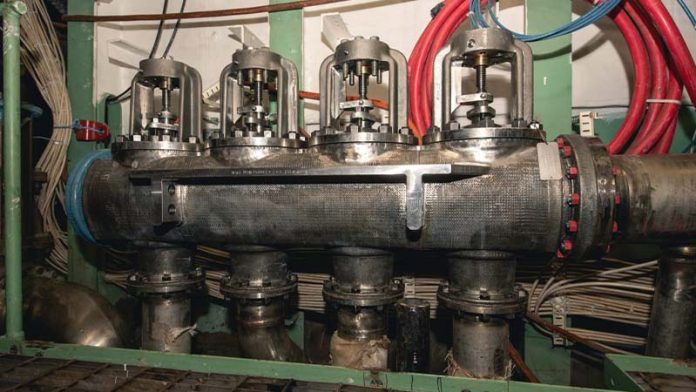US shipbuilding firm Huntington Ingalls Industries (HII) has successfully installed a 3D printed valve manifold assembly into a new US Navy aircraft carrier. The United States’ largest military shipbuilder has installed over 55 3D printed parts to date at its Newport News Shipbuilding (NNS) division. It plans to deploy at least another 200 by the end of 2025.
HII’s 3D printed assembly was integrated into the US Navy’s third Gerald R. Ford-class aircraft carrier, the USS Enterprise (CVN 80). Measuring approximately five feet long and weighing 1,000 pounds, the large-scale component was fabricated with the help of metal DED additive manufacturing specialist DM3D. It was installed at the NNS facility in Virginia and is reportedly the first 3D printed part of its kind to be used in US aircraft carrier construction.
Looking ahead, the Fortune 500 company plans to install similar 3D printed manifold assemblies on the USS Doris Miller, a Gerald R. Ford-class carrier set to be launched in 2029. According to HII, additive manufacturing reduces scheduling risks and increases production efficiency compared to conventional casting methods.
Additive manufacturing is nothing new at HII. The shipbuilding giant, which employs 44,000 people, is a certified and approved supplier of 3D printed components for the US Navy’s Naval Sea Systems Command (NAVSEA).
HII’s latest 3D printed component, produced alongside DM3D, is a specialized valve manifold assembly that allows a single source of fluid to be transported to multiple points on the ship. It has been installed in the new nuclear-powered warship’s pump room. The USS Enterprise (CVN 80) is set to be launched with the assembly later this year.


